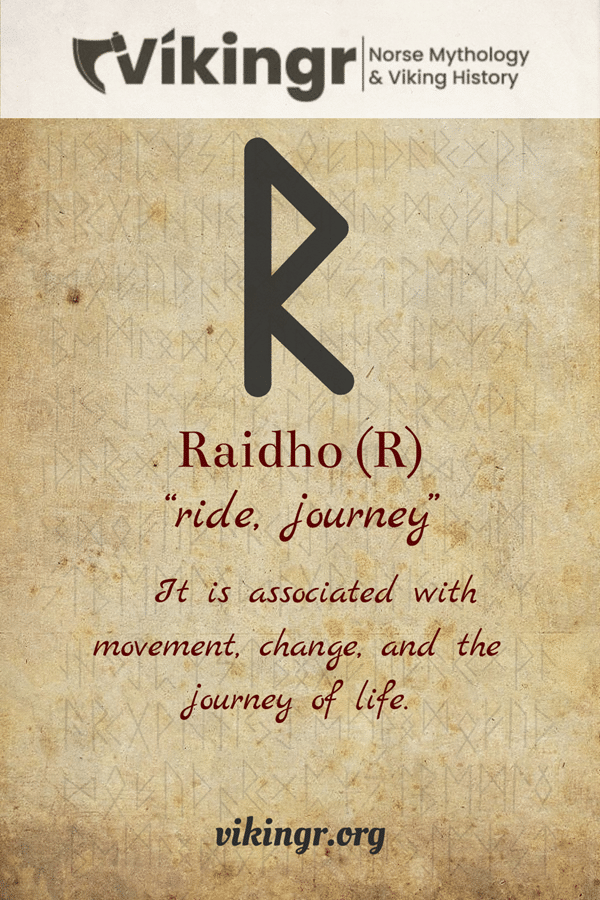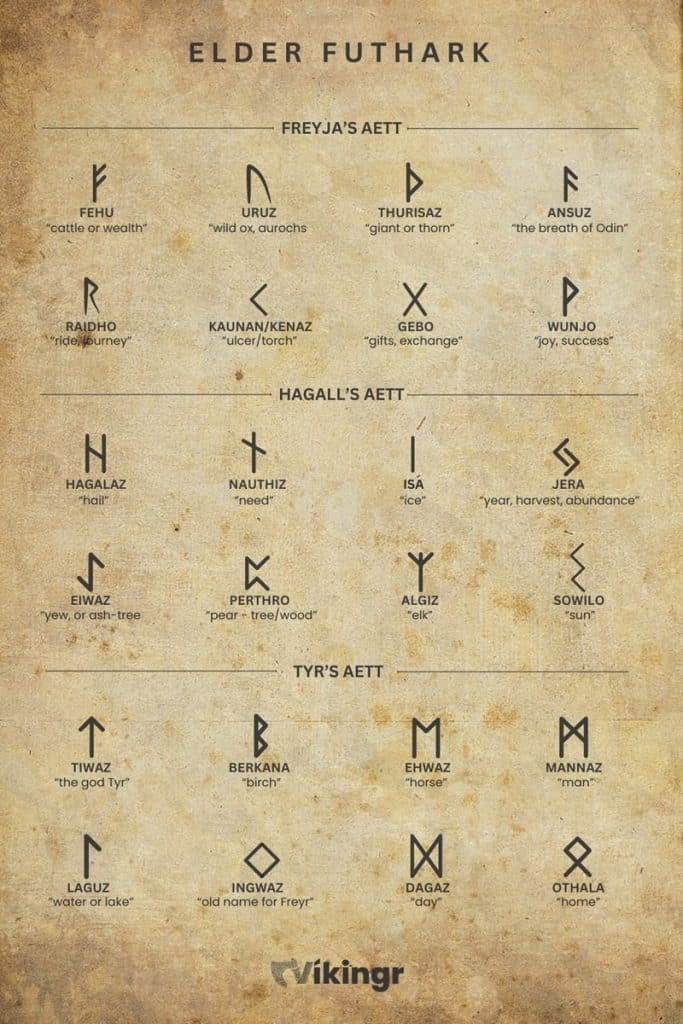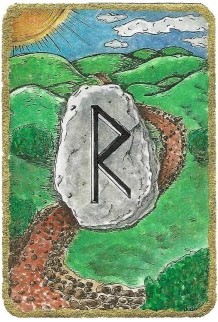The rune Raidho is the fifth rune, in the first aett in the Elder Futhark. In this post I will explore the meaning of the Raidho rune, as well as the deeper symbolism it carries. Translating to “ride”, its meaning is really connected to being on a journey.
Raidho: Background and Description
Following Ansuz and preceding Kenaz in the Elder Futhark is Raidho, the fifth rune. Originating from Old Norse, the name “Raidho” translates roughly to “ride” or “journey.”
The Elder Futhark wasn’t restricted to only Scandinavia, but rather, it found extensive use throughout Europe. From Scandinavia to the British Isles, and even reaching as far south as Italy, archaeologists have discovered evidence of its use. Within this area, Raidho, much like its runic counterparts, has been found on a diverse range of objects. You can spot its etchings on everything from grand runestones to simple daily items, showcasing its far-reaching influence.
The etymology of “Raidho” is fascinating. Rooted in the Proto-Germanic “*raidō,” it’s associated with travel and movement. This rune embodies the journey, both physical and spiritual, that was so central to the Norse worldview.

Graphical Representation
Visually, Raidho is a simple yet striking rune. It’s composed of a vertical line with a single “leaf” angled to the right at the top and a leg. Really it looks a lot like a modern day R. Imagine a path stretching out before you, leading you towards the horizon, and you’re close to its form.
Historically, variations of Raidho’s design have been found. Some inscriptions show the rune with a more curved branch or with the branch angled to the left. However, the traditional form remains the most recognized and used.
Phonetic Value
In the Proto-Germanic language, Raidho represented the sound “r,” as in “ride.” As Germanic languages evolved, so did the pronunciation of this rune. In Old Norse, for example, it was pronounced as a trilled “r.”
Symbolic Meaning of the Raidho Rune
This rune is traditionally associated with journeys and travel. It represents movement and progress, embodying the idea of a journey as a transformative process. This is interesting on several levels as life and death itself, also seems to have been seen as a journey by the Vikings. From learining about the Viking Age’s different types of undead, you might understand the journey perspective better.

The rune, intrinsically linked to the cosmic order and the laws of the universe, serves as a symbol of not just physical travel, but also the spiritual journey towards wisdom and understanding. In this context, Raidho takes on a profound significance.
The Allfather Odin, the god of wisdom and knowledge, is a central figure in this symbolic interpretation. Raidho, with its associations with journey and transformation, reflects these themes, offering a glimpse into the values and beliefs of the ancient Germanic peoples.
The Aett and its Symbolism
Raidho, belonging to the first aett of the Elder Futhark, shares a close association with the god Freyr and the goddess Freyja. This specific aett, or rune family, carries the themes of prosperity, fertility, and the cyclical rhythm of life.
Transitioning to the central figures of this aett, we encounter Freyr and Freyja, the Divine Siblings of the Vanir. Freyr, the God of Fertility, and Freyja, the Goddess of Love, encapsulate the life-affirming energies of growth, prosperity, and love.
In addition to these themes, Raidho introduces an element of journey and transformation, thereby adding a layer of complexity to this aett. It serves as a reminder, urging us to embrace the constant change and movement that are inherent in our life journey.

Elder Futhark Quiz
Do you want to test your knowledge of Elder Futhark runes? Then this quiz is perfect for you!
Don’t forget to play our other games as well!
Raidho Used in Divination and Magic

I personally don’t subscribe to the practice of divination, but I find its historical and cultural aspects utterly fascinating. In runic divination, people often interpret Raidho as a sign of movement or change. It might suggest a journey, either physical or spiritual, that someone needs to undertake.
Historically, people definitely used it in magical practices. We don’t have much concrete evidence of specific spells or rituals, but it’s plausible that people invoked the rune’s associations with journey and transformation in magical contexts.
In modern times, some practitioners of runic magic use Raidho in rituals or spells related to travel or personal transformation. Again, while I don’t personally practice this, I respect the cultural significance and personal meaning it holds for many.
Raidho in the Younger Futhark – The Unaltered Ride
As the Elder Futhark evolved into the Younger Futhark, also known as Norse runes, around the 7th and 8th centuries, Raidho maintained its form and meaning. Symbolizing the journey and right order, it continues to represent the ‘r’ sound, signifying the unchanging nature of the journey and the path ahead. In the Norse runes, it is known as reið.
Frequently Asked Questions
It represents journey and transformation.
Raidho, in divination, often signifies that one needs to undertake a journey or change.
Raidho belongs to the first aett of the Elder Futhark, associated with Freyr and Freyja.
Featured Image Credit: Alatius, Public domain, via Wikimedia Commons
